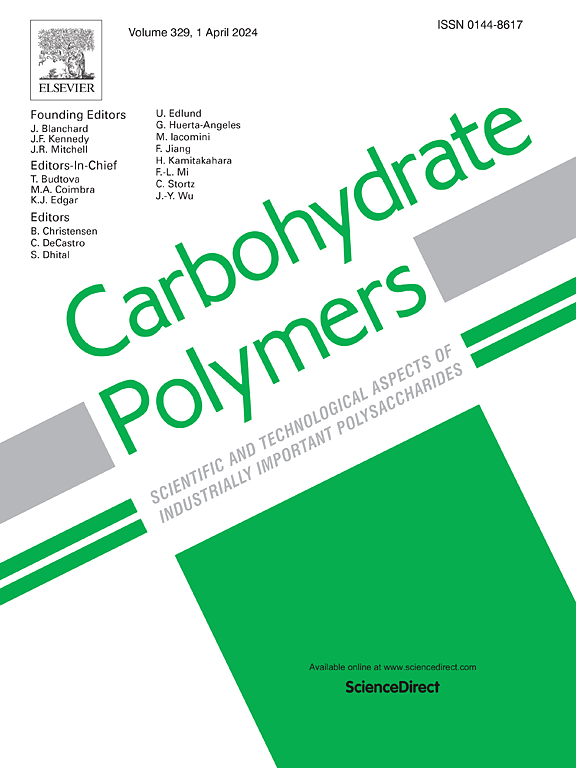Structural characterization and immunomodulatory activity analysis of a novel pectic polysaccharide extracted from Tetrastigma hemsleyanum Diels et Gilg and its hydrolysis products
IF 10.7
1区 化学
Q1 CHEMISTRY, APPLIED
引用次数: 0
Abstract
Tetrastigma hemsleyanum Diels et Gilg (T. hemsleyanum) is a rare traditional Chinese medicine with high medicinal value and T. hemsleyanum polysaccharides (THPs) have attracted increasing attention in recent years. However, detailed structural and functional insights into THPs remain limited. Here, a novel pectic polysaccharide (STHP4) with an average molecular weight (Mw) of 119 kDa was extracted and purified from the aboveground part of T. hemsleyanum. Structurally, STHP4 was mainly composed of galacturonic acid, glucuronic acid, and galactose, with minor glucose, rhamnose, arabinose, and mannose, and its primary backbone was 1,4-GalA. Pectinase treatment of STHP4 yields two distinct fractions: STHP4-1 and STHP4-2. STHP4-1 shared the same types of monosaccharides with STHP4, except for the absence of glucose, but had a broad Mw distribution (9.9 to 251 kDa). Another product, STHP4-2, a mixture of oligosaccharides and free monosaccharides, has a Mw of 1.387 kDa. Their structures were further elucidated via methylation analysis and NMR spectra. Furthermore, STHP4-1 exhibited superior immune regulatory effects on macrophages, including increased nitric oxide release and elevated interleukin-6, interleukin-1β, and tumor necrosis factor α expression. These findings suggest that STHP4-1 might be the core active domain of STHP4, and both STHP4 and STHP4-1 are potential immune enhancers.

求助全文
约1分钟内获得全文
求助全文
来源期刊

Carbohydrate Polymers
化学-高分子科学
CiteScore
22.40
自引率
8.00%
发文量
1286
审稿时长
47 days
期刊介绍:
Carbohydrate Polymers stands as a prominent journal in the glycoscience field, dedicated to exploring and harnessing the potential of polysaccharides with applications spanning bioenergy, bioplastics, biomaterials, biorefining, chemistry, drug delivery, food, health, nanotechnology, packaging, paper, pharmaceuticals, medicine, oil recovery, textiles, tissue engineering, wood, and various aspects of glycoscience.
The journal emphasizes the central role of well-characterized carbohydrate polymers, highlighting their significance as the primary focus rather than a peripheral topic. Each paper must prominently feature at least one named carbohydrate polymer, evident in both citation and title, with a commitment to innovative research that advances scientific knowledge.
 求助内容:
求助内容: 应助结果提醒方式:
应助结果提醒方式:


